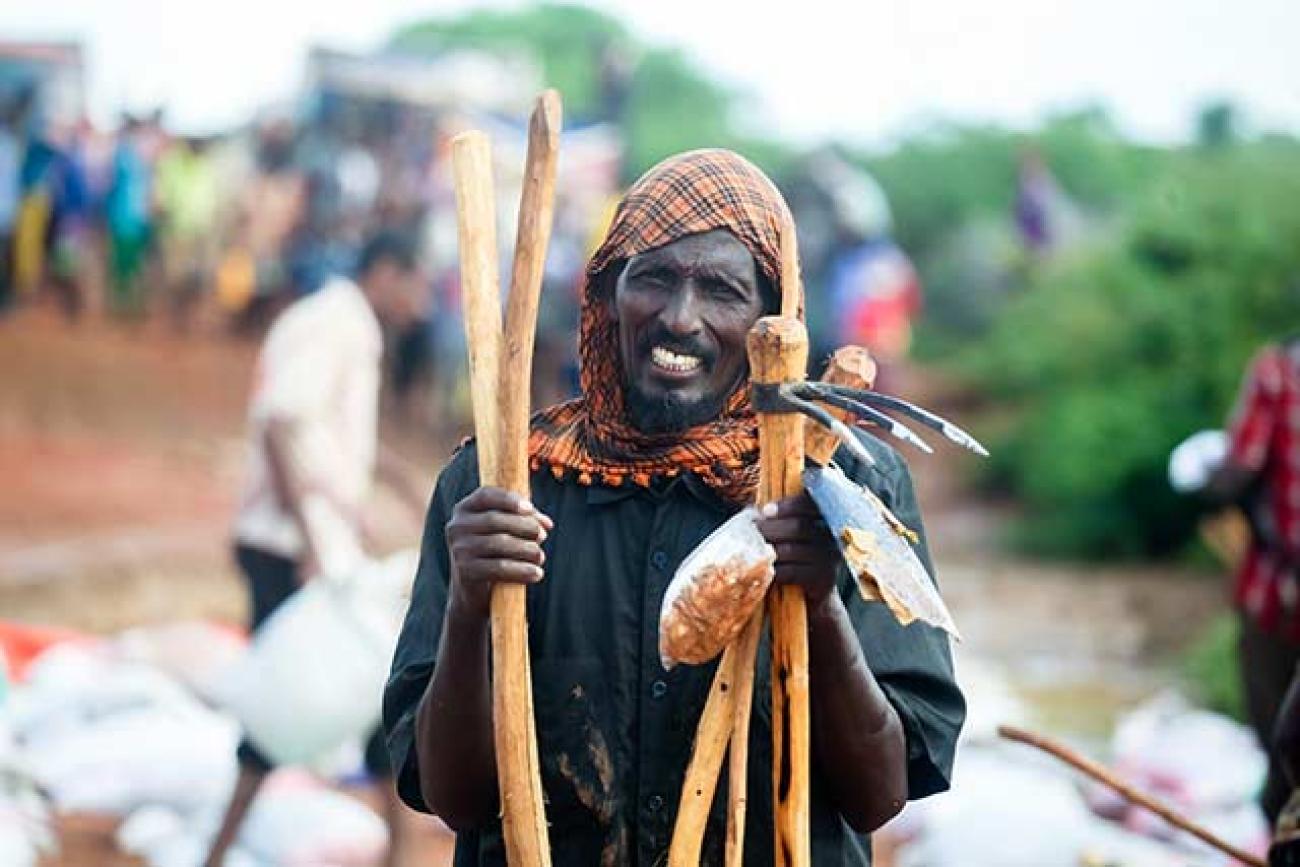FAO deploys post-emergency recovery experts to devastating floods in Somalia

Supporting those affected so they can resume farming, repairing broken canals and reinforcing early warning information for vulnerable communities
Supporting those affected so they can resume farming, repairing broken canals and reinforcing early warning information for vulnerable communities are the three axes of FAO’s response to the floods in Somalia. “FAO is committing its best efforts to stand by the affected communities in Somalia during this post-emergency recovery phase, so as to restore agricultural activities as soon as possible while preserving livelihoods and building resilience for the future,” said Etienne Peterschmitt, FAO Representative in Somalia a.i.
The recent floods are likely to delay the Deyr cropping season, which usually runs from October to December. Following Somalia’s poorest cereal harvest since 2011, a prolonged lean season could deteriorate an already fragile food security situation in flood-affected areas. FAO will provide each household with 20kg of maize seeds or 15kg of sorghum seeds and 10kg cowpea seeds, as well as 250g of assorted vegetables.
“We are planning to assist 5 000 families affected by floods through unconditional cash transfers and agricultural inputs, so farmers in Hiiran and Middle Shabelle can swiftly resume crop production. Our aim is to address these time-critical needs throughout this post-emergency window, in particular in rural areas,” said Ezana Kassa, FAO’s Emergencies Coordinator in Somalia.
Repairing dykes and canals: towards a resilient recovery
In collaboration with State and Federal ministries, FAO will continue with the activities it had planned before the floods. Funded by the Governments of Italy and Sweden, these include reinforcing up to 10 km of river embankments to protect the town of Belet Weyne - which was at the epicenter of the flooding – and rehabilitating up to 36 km of irrigation canals in Jowhar, where up to 75 km of main canals will eventually be recovered. These long-term development projects will provide smallholder farmers with crucial irrigation and drainage facilities while diverting floodwater.
FAO’s response is also reaching the most affected urban areas. Thanks to funding from the United Kingdom of Great Britain and Northern Ireland we are restoring infrastructure in areas critical for livelihoods in Belet Weyne, where around 273 000 people have been forced to flee their homes. This includes rebuilding the main market area and roads leading to the market by providing and compacting approximately 14 000m3 of soil.
Reinforcing early warning information
FAO will also reinforce its efforts to produce early warning information that facilitates preparedness for shocks. The FAO Somalia Land and Water Information Management unit (SWALIM) has been monitoring rainfall, river levels and flooding extent on a daily basis to produce reliable and consistent early warning information. This is disseminated through Twitter and, most importantly, via text messages sent country-wide through SWALIM’s Flood Risk and Response Information Management System (FRRIMS).
SWALIM’s maps show the flood extent in Belet Weyne and along the Shabelle river, as well as affected cropland affected, which has been key in directing the humanitarian response by the international community in Somalia. The unit will continue its capacity development work with Government officials, for example through trainings on water and land resource mapping and an international fellowships for Ministry staff on meteorological observation.





